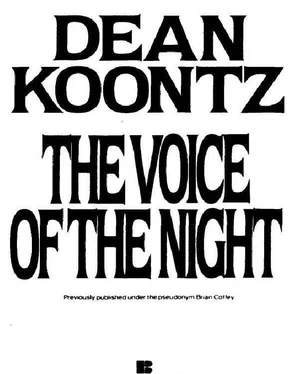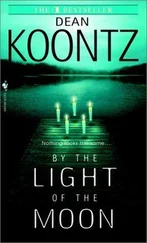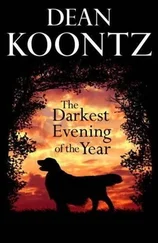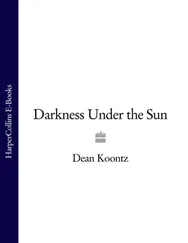He took off his glasses, pulled a handkerchief from his pocket, and carefully polished the thick lenses. He could still see Roy fairly well, but everything farther than five feet was blurry.
“Hurry up, Colin.”
“Maybe we should wait for tomorrow.”
“Is it going to take you that long to clean your goddamned glasses?”
“I mean, in daylight we’ll be able to see more of the Kingman place.”
“Seems to me it’s more fun to look at a haunted house at night.”
“But you can’t see much at night.”
Roy regarded him silently for a few seconds. Then: “Are you scared?”
“Of what?”
“Ghosts.”
“Of course not.”
“Sounds like it.”
“Well … it does seem kind of foolish to go poking around a place like that in the dark, in the dead of night, you know.”
“No. I don’t know.”
“I’m not talking about ghosts. I mean, one of us is bound to get hurt if we mess around in an old broken-down house in the middle of the night.”
“You are scared.”
“Like hell.”
“Prove you’re not.”
“Why should I prove anything?”
“Want your blood brother to think you’re a coward ?”
Colin was silent. He fidgeted.
“Come on!” Roy said.
Roy mounted his bike and pedaled out of the deserted service station, heading north on Broadway. He did not glance back.
Colin stood at the soda machine. Alone. He didn’t like being alone. Especially at night.
Roy was a block away and still moving.
“Damn!” Colin said. He shouted, “Wait for me,” and clambered onto his bicycle.
They walked the bikes up the last steep block toward the dilapidated house that crouched above them. With each step, Colin’s trepidation grew.
It sure looks haunted, he thought.
The Kingman place was well within the Santa Leona city limits, yet it was separated from the rest of the town, as if everyone were afraid to build nearby. It stood on top of a hill and held dominion over five or six acres. At least half of that land had once been well-tended, formal gardens, but long ago it had gone badly to seed. The north leg of Hawk Drive dead-ended in a wide turnaround in front of the Kingman property; and the lampposts did not go all the way to the end of the street, so that the old mansion and its weed-choked grounds were shrouded in blackest shadows, highlighted only by the moon. On the lower two thirds of the hill, on both sides of the road, modem California-style ranch houses clung precariously to the slopes, waiting with amazing patience for a mudslide or the next shock wave from the San Andreas Fault. Only the Kingman place occupied the upper third of the hill, and it appeared to be waiting for something far more terrifying, something a great deal more malevolent than an earthquake.
The house faced the center of town, which lay below it, and the sea, which was not visible at night, except in the negative as a vast expanse of lightlessness. The house was a huge, rambling wreck, ersatz Victorian, with too many fancy chimneys and too many gables, and with twice as much ginger-bread around the eaves and windows and railing as true Victorian demanded. Storms had ripped shingles from the roof. Some of the ornate trim was broken, and in a few spots it had fallen down altogether. Where shutters still survived, they often hung at a slant, by a single mounting. The white paint had been weathered away. The boards were silver-gray, bleached by the sun and the constant sea wind, waterstained. The front-porch steps sagged, and there were gaps in the railing. Half of the windows were haphazardly boarded shut, but the others were without protection, thus shattered; moonlight revealed jagged shards of glass like transparent teeth biting at the empty blackness where stones had been pitched through. In spite of its shabby condition, however, the Kingman place did not have the air of a ruin; it did not give rise to sadness in the hearts of those who looked upon it, as did many once-noble but now decrepit buildings; somehow it seemed vital, alive… even frighteningly alive. If a house could be said to have a human attitude, an emotional aspect, then this house was angry, very angry. Furious.
They parked their bicycles by the front gate. It was a big rusted iron grill with a sunburst design in the center.
“Some place, huh?” Roy said.
“Yeah.”
“Let’s go.”
“Inside?”
“Sure.”
“We don’t have a flashlight.”
“Well, at least let’s go up on the porch.”
“Why?” Colin asked shakily.,
“We can look in the windows.”
Roy walked through the open gate and started up the broken flagstone walk, through the tangled weeds, toward the house.
Colin followed him for a few steps, then stopped and said, “Wait. Roy, wait a sec.”
Roy turned back. “What is it?”
“You been here before?”
“Of course.”
“You been inside?”
“Once.”
“Did you see any ghosts?”
“Nah. I don’t believe in ‘em.”
“But you said people see things here.”
“Other people. Not me.”
“You said it was haunted.”
“I told you other people said it was haunted. I think they’re full of shit. But I knew you’d enjoy the place, what with you being such a big horror-movie fan and everything.”
Roy began to walk along the path again.
After several more steps, Colin said, “Wait.”
Roy looked back and grinned. “Scared?”
“No.”
“Ha!”
“I just have some questions.”
“So hurry up and ask them.”
“You said a lot of people were killed here.”
“Seven,” Roy said. “Six murders, one suicide.”
“Tell me about it.”
During the past twenty years, the very real tragedy of the Kingman murders had evolved into a highly embellished tale, a grisly Santa Leona legend, recalled most often at Halloween, composed of myth and truth, perhaps more of the former than the latter, depending on who was telling it. But the basic facts of the case were simple, and Roy stuck close to them when he told the story.
The Kingmans had been wealthy. Robert Kingman was the only child of Judith and Big Jim Kingman; but Robert’s mother died of massive hemorrhaging while delivering him. Big Jim was even then a rich man, and he grew continually richer over the years. He made millions from California real estate, farming, oil, and water rights. He was a tall, barrel-chested man, as was his son, and Big Jim liked to boast that there was no one west of the Mississippi who could eat more steak, drink more whiskey, or make more money than he could. Shortly before Robert’s twenty-second birthday, he inherited the entire estate when Big Jim, having drunk too much whiskey, choked to death on a large, inadequately chewed chunk of filet mignon. He lost that eating contest to a man who had yet to make a million dollars in plumbing supplies, but who could at least boast of having lived through the feast. Robert had not developed his father’s competitive attitude toward food and beverage, but he had acquired the old man’s business sense, and although he was quite young, he made even more money with the funds that had been left to him.
When he was twenty-five, Robert married a woman named Alana Lee, built the Victorian house on Hawk Hill, just for her, and began fathering a new generation of Kingmans. Alana was not from a wealthy family, but she was said to be the most beautiful girl in the county, with the sweetest temper in the state. The children came fast, five of them in eight years-three boys and two girls. Theirs was the most respected family in town, envied, but also liked and admired. The Kingmans were churchgoers, friendly, graced with the common touch in spite of their high station, charitable, involved in their community. Robert obviously loved Alana, and everyone could see that she adored him; and the children returned the affection their parents lavished upon them.
Читать дальше










